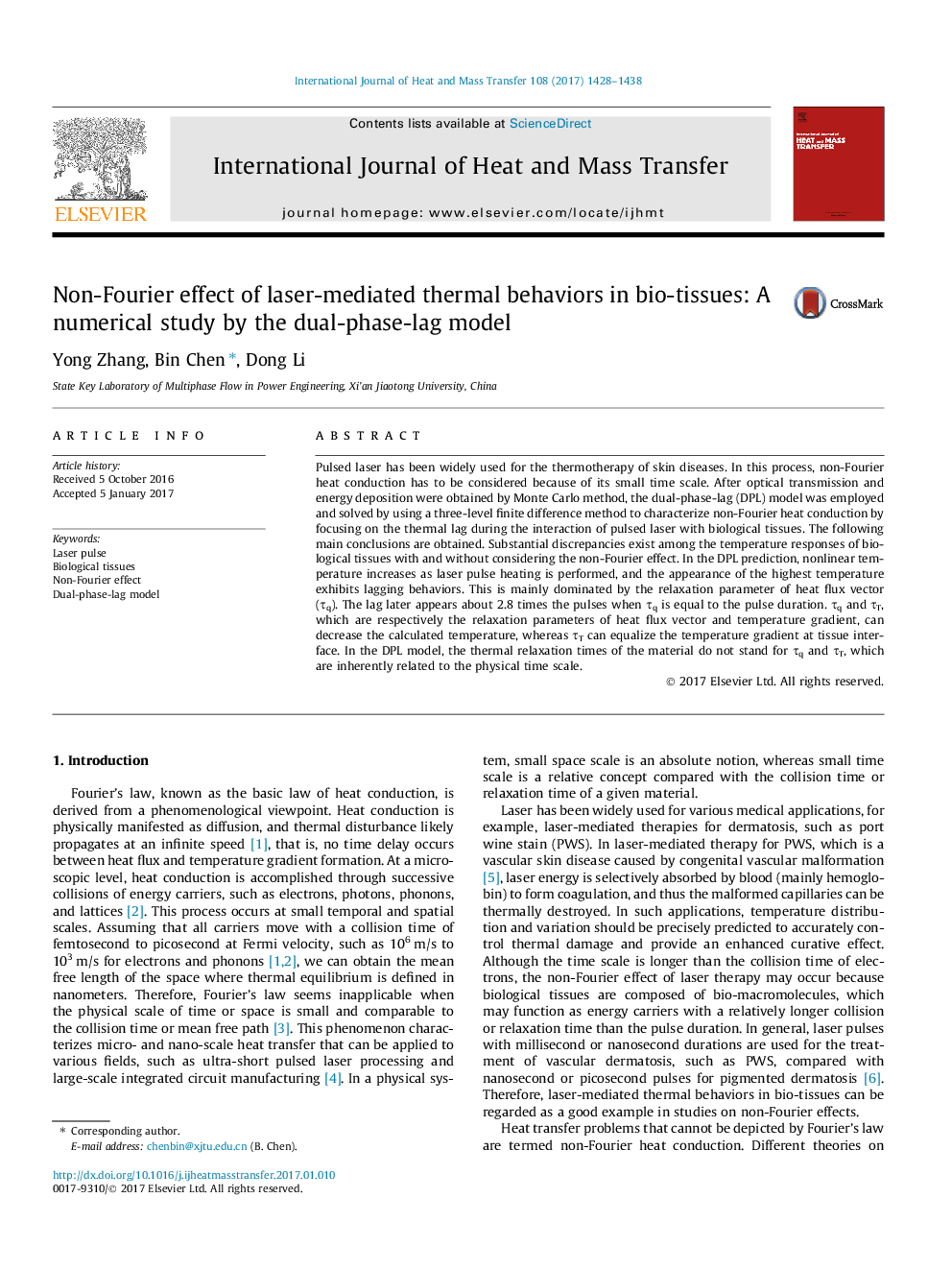| Article ID | Journal | Published Year | Pages | File Type |
|---|---|---|---|---|
| 4994373 | International Journal of Heat and Mass Transfer | 2017 | 11 Pages |
Abstract
Pulsed laser has been widely used for the thermotherapy of skin diseases. In this process, non-Fourier heat conduction has to be considered because of its small time scale. After optical transmission and energy deposition were obtained by Monte Carlo method, the dual-phase-lag (DPL) model was employed and solved by using a three-level finite difference method to characterize non-Fourier heat conduction by focusing on the thermal lag during the interaction of pulsed laser with biological tissues. The following main conclusions are obtained. Substantial discrepancies exist among the temperature responses of biological tissues with and without considering the non-Fourier effect. In the DPL prediction, nonlinear temperature increases as laser pulse heating is performed, and the appearance of the highest temperature exhibits lagging behaviors. This is mainly dominated by the relaxation parameter of heat flux vector (Ïq). The lag later appears about 2.8 times the pulses when Ïq is equal to the pulse duration. Ïq and ÏT, which are respectively the relaxation parameters of heat flux vector and temperature gradient, can decrease the calculated temperature, whereas ÏT can equalize the temperature gradient at tissue interface. In the DPL model, the thermal relaxation times of the material do not stand for Ïq and ÏT, which are inherently related to the physical time scale.
Related Topics
Physical Sciences and Engineering
Chemical Engineering
Fluid Flow and Transfer Processes
Authors
Yong Zhang, Bin Chen, Dong Li,
